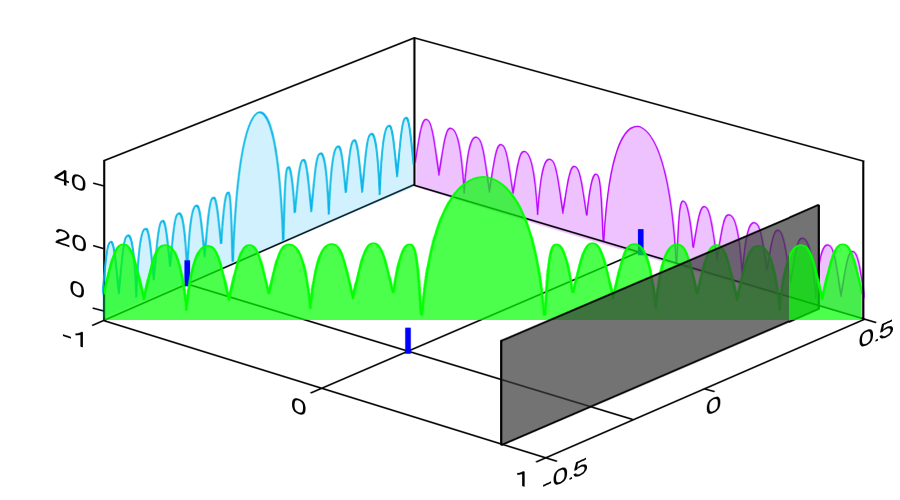Space-Time Adaptive Processing (STAP)

Figure 1: Space-Time Spectrum
Space-Time Adaptive Processing (STAP)
Advanced airborne radar systems are required to detect targets in the presence of both clutter and jamming. Ground clutter is extended in both angle and range, and is spread in Doppler frequency because of the platform motion.
Space-time adaptive processing (STAP) refers to the simultaneous processing of the signals from an array antenna during a multiple pulse coherent waveform. STAP can provide improved detection of very low velocity targets obscured by mainlobe clutter, sidelobe clutter, and jamming through two dimensional processing, that enhances the ability of radars to detect targets that might otherwise be obscured by clutter or by jamming. This approach uses processing in both the time and spatial domain. Till now the algorithms were based upon the first order statistical characteristics of the echo. But STAP uses the second order statistics. This is because the determination of a target in a particular cell is no longer confined to a look into a linear array of cells, rather the targets are determined using information about adjacent cells in both dimensions.
To implement STAP requires sampling the radar returns at each element of an antenna array, over a dwell encompassing several pulse repetition intervals. The output of STAP is a linear combination or weighted sum of the input signal samples.
What does STAP stand for?
- The „Adaptive” in STAP refers to the fact that STAP weights are computed to reflect the actual noise, clutter and jamming environment in which the radar finds itself.
- The „Space” in STAP refers to the fact that the STAP weights (applied to the signal samples at each of the elements of the antenna array) at one instant of time define an antenna pattern in space. If there are jammers in the field of view, STAP will adapt the radar antenna pattern by placing nulls in the directions of those jammers thus rejecting jammer power.
- The „Time” in STAP refers to the fact that the STAP weights applied to the signal samples at one antenna array element over the entire dwell define a system impulse response and, hence, a system frequency response. The clutter spectrum seen by ground based radars typically has a ridge at zero Doppler an can easily processed by pulse pair processing while the clutter spectrum seen by airborne radars is typically more complicated due to the combination of platform motion and antenna pattern.
- STAP processing adapts the radar frequency response to the actual clutter spectrum in which the radar finds itself so that the radar will preferentially admit signal power while simultaneously rejecting clutter power.
The adaptive weights used by STAP are computed using a clutterplus-noise covariance matrix estimated from data collected at successive ranges. An accurate estimate of this matrix can be obtained only if the structure of the clutter spectrum remains unchanged over the range interval used for the estimation.

